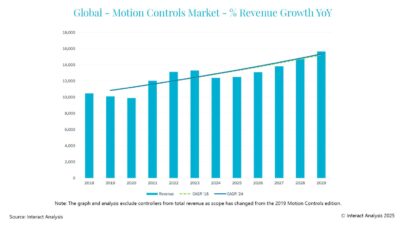The latest edition of Energy Efficiency in Motor Driven Systems (EEMODS)—a notable international conference on electric motors, drives, and associated systems—had the objective to explain and promote commercial advances of energy-efficient systems to OEMs, energy users, and other stakeholders. This part 1 of two articles covers system issues, recommendations, and a market overview of efficient motors and drives. See graphics.

Some 150 attendees from industry, academia, government, research labs, and other service organizations came together at EEMODS `11 in Alexandria, VA (greater Washington, D.C. area) during Sept. 12-14, 2011, to discuss, debate, and promote advances in efficient motor-driven systems. Held for the first time in the Americas, EEMODS `11 consisted of parallel presentation tracks (motors/systems, drives, pumps, test methods, efficiency policies/programs, etc); panel discussions; and several table-top exhibits.
Necessity for energy efficiency has become evident whether viewed from the standpoint of available resources, user demands, or costs. Substantial progress has been made through engineering innovation, development of standards and mandatory regulations worldwide, and OEM/customer education—especially for electric motors. Deployment of increasingly efficient motors has been responsible for great energy savings.
While developments have gone beyond motors to equipment such as pumps and fans, a wider “systems approach” must be part of future energy-efficiency programs. That approach was a recurring theme at EEMODS `11. However, the systems objective becomes progressively harder to reach due to increased complexity and large number of variables found in myriad industrial and commercial systems.
As a result, “motor system” efficiency data are limited or insufficient, as noted in several conference presentations. Handling the many system variables to obtain needed data remains an adjunct issue.
System policies, life-cycle cost
Energy management is integral to motor system efficiency. Elizabeth Dutrow, director, Energy Star Industrial Partnership at the U.S. EPA, noted during a panel discussion that energy management enables greater savings than pursuing individual efficiency improvement projects. “Efficiency is doing the same with less, not sacrificing,” she said. “Personal belief of workers in efficiency is also vital to success.“ Dutrow described various accomplishments of the long-running Energy Star program, which was started by the EPA and has developed into a program of international scope. “Technology applied correctly is an enabler of energy efficiency,” Dutrow added.
Barriers to implementing energy-efficient systems were among issues discussed by Bruce Benkhart, director of Applied Proactive Technologies Inc. He explained that in the real world, positions like “keep the line running,” risk aversion to technology, and corporate disconnect too often override efficiency considerations.
Life-cycle cost (LCC) was another recurring theme at EEMODS `11. The philosophy of first cost over LCC remains strongly embedded in purchasing decisions. “Overall business climate is focused on containing operating costs—even if that means ‘bad’ long-term strategy,” Benkhart said. “Plant up-time and reliability are still considered more important than energy efficiency.”
Paolo Bertoldi, of the European Commission Directorate, JRC, Institute for Energy, recommended buying of equipment based on LCC principles in connection with energy management. He spoke about an “extended product approach” that looks at several equipment components for efficiency as a system” and the growing availability of decision support and assessment tools for selecting energy-efficient equipment—for example, pumps and fans. Tax incentives in various countries are also ongoing to stimulate purchase of efficient products. “However, tax incentives alone don’t assure success,” Bertoldi stated.
Office and commercial buildings constitute another “system” ripe for efficiency improvement. As part of EEMODS’ opening plenary session, U.S. Congressman Russ Carnahan (D-MO), explained that outdated buildings are significant energy wasters, especially in high electricity and water usage. “High-performance buildings and major retrofits allow new technologies to reach the marketplace,” he said.
‘Walking the torque’
That was the catchy shortened title of the paper, “Proposed International Energy Agency (IEA) work plan for realizing energy efficiency opportunities offered by electric motor driven systems,” presented by Hugh Falkner, consultant to the Dept. of Climate & Energy Efficiency, Australia. Among the plan’s recommendations were that global cooperation is a must to obtain meaningful energy-efficiency gains. “Unilateral actions can impede developments,” Faulkner said. “Certainty over future program changes is needed to provide a sense of stability for stakeholders.”
A further recommendation was wider adoption and correct setting of system controls—especially in the case of variable-speed drives (VSDs). Key questions to be answered here: Are settings optimized for system demand? Are driven machine and transmission sized and selected for best efficiency? Equipment attracting the highest priority of action in the IEA project were VSDs, fans/pumps, and induction motors—followed by gearboxes and sealed compressor-motor units (2nd tier) and air compressors, elevators, and specialized pumps (3rd tier).
Pump systems’ importance
Some 19% of energy used in all motor-driven systems involves pumps, according to Roland McKinney, engineer at SKF Ltd., U.K. Hence, efficient pump systems represent a huge energy reduction potential.
McKinney’s premise in his report, “Inseparable twins of pump systems: Energy-efficiency and reliability,” noted that many pump failures could be due to non-efficient usage and/or operation. Inefficiency adds cost in three areas:
- More energy use
- More maintenance effort
- Reduced reliability and rise of safety issues.
“However, root-cause failure analysis in pump systems is rarely attributed to energy-inefficiency,” he stated.
Recommendations include adding energy-efficiency monitoring to pump system proactive maintenance. “Energy monitoring is not normally considered a maintenance function,” McKinney added. Numerous common causes of pump failure and low efficiency were identified by SKF. Condition monitoring, static and dynamic electrical testing, and operator training were some suggested ways to assess, minimize, or avoid failure causes.
Two EEMODS `11 sessions with multiple presentations and other papers were devoted to further coverage of pump systems. Examples include unrealized energy savings in diverse applications (Ref. 1) and speed control of parallel pumping systems (Ref. 2).
Market view
State of the market for motors and drives influences future developments. A thorough market view was presented by Alex Chausovsky, research director, electric motors group at IMS Research Inc., in “Motors & Drives Global Update,” which included effects of the recent market downturn.
IMS Research put revenues for low-voltage (LV) motors at $11.13 billion in 2010 (base year of the report), when 38.5 million units were shipped. LV motors comprised IE classes 1, 2, 3, 4, and other non-classified motors up to 375 kW rating. (International Standard IEC 60034-30 defines these motor efficiency classes.) Revenues already showed improvement from the 2009 low-point of the market downturn, attributed to sales of 15-25% more costly efficient motors. LV motor revenues are expected to nearly double by 2014 to $20.42 B.
Breakdown of motor usage by IE classes showed IE1 (standard efficiency) predominant at 58% in 2010—prior to mandatory EU regulations—but declining substantially to under 19% by 2014. IE2 motors (high efficiency) are projected to move from 36% in 2010 to dominate at 57% by 2014, while IE3 (NEMA Premium equivalent) grows from 2.9% in 2010 to 20.3% market penetration by 2014—see bar graphs. IE4 (PM synchronous and most efficient class) motors are forecast for a narrow growth range (0.9% to 1.8%), while other non-classified motor usage will experience essentially no change (approx. 2.3%) during 2010-14 time period, according to Chausovsky.
Source: IMS Research Inc.
Regional distribution for LV ac motors is above 40% for Asia Pacific, with approximate 30% shares each going to the Americas and EMEA (Europe, Middle East and Africa).
For LV drives, IMS Research breaks down market coverage into four categories: compact ac (<25 kW), standard ac (<500 kW), premium ac (1 kW through the largest ratings and most demanding applications), and SCR-based dc drives.
Revenues for LV ac and dc drives were $9.95 B in 2010, when 16.4 million units were shipped. Similar to LV motors, market low-point was in 2009. Revenues are expected to reach $16.08 B by 2014, with over 10% growth in the 2010-14 time period, said IMS Research. The 2010 motor drives market breakdown is shown in the diagram (pie chart) by drive type, including the separate category of medium-voltage (MV) drives.
Source: IMS Research Inc.
Further market scenarios for MV motors and MV drives were also covered in Chausovsky’s presentation.
Into what applications are these products going? Top industry sectors for LV motors and drives were nearly similar: Commercial HVAC was the top application for motors at 25% share (12.5% for drives); followed by food, beverage, tobacco (7% share for motors vs. 13% for drives); metals at 5.5% share for drives; and paper/paperboard at 5% for motors.
Market penetration of ac drives relative to motors is another factor of interest, but not obvious from market data. IMS Research estimates there is a 1:5 drive/motor penetration ratio worldwide, with higher ratios occurring in Germany and China.
Energy-efficiency developments in Brazil, China, India, Japan, and Sweden received coverage at EEMODS in separate presentations.
Hosted by the 1.MG Motor and Generator section of NEMA (National Electric Manufacturers Association), EEMODS `11 was the 7th biennial running of the event and held for the first time in the U.S. (or the Americas). Since its inception in 1995, EEMODS has been staged in Europe and Asia. The next edition in 2013 will be held in Rio de Janeiro, Brazil.
A sentiment voiced by several conference presenters was, “We have come a long way, but still have a way to go.”
See related article:
https://www.controleng.com/industry-news/more-news/single-article/eemods-11-efficient-motor-systems-conference-standards-new-technologies/663c605c3e.html
Frank J. Bartos, P.E., a Control Engineering contributing content specialist. Reach him at [email protected].
For more information, visit:
www.appliedproactive.com
www.eemods.org
www.iea.org/papers/2011
www.imsresearch.com
https://re.jrc.ec.europa.eu/energyefficiency
(Ref. 1) – “Pumping Systems – Low Hanging Fruit in Saving Energy”
www.eemods.org/proceedings.html
Day 1 – Sept. 12 – PUMPS 1/Ross-Pumping Systems_EEMODS_Presentation
(Ref. 2) – “Benefits of Using Dynamic Speed Control with Parallel Pumping Systems”
www.eemods.org/proceedings.html
Day 3 – Sept. 14 – MOTOR SYSTEMS/Viholainen
Motors and drives channel
https://www.controleng.com/new-products/motors-and-drives.html



